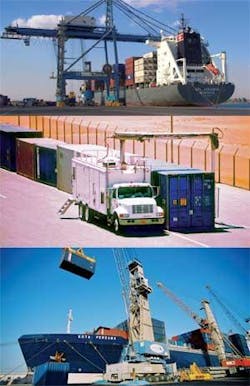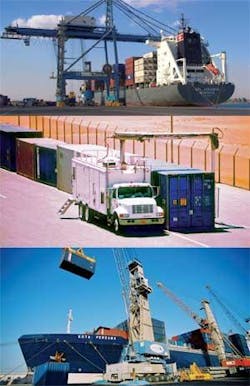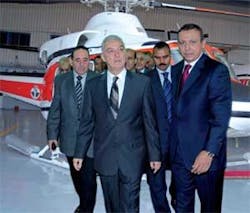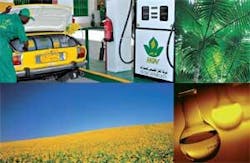Growing demand for fuel, petrochemical feedstock and petrochemical products both at home and in global markets combined with Egypt’s petrochemical master plan offers attractive investment opportunities that will also speed the country’s downstream growth.
Evidence of international interest in these opportunities comes from a number of recent agreements between Egypt and international companies.
World refining capacity is stretched thin and growing economies will demand more petroleum-derived products, from gasoline to grocery bags. Many of the same advantages that draw exploration and development companies to Egypt also help attract investors to these emerging downstream opportunities:
- Freedom to choose the field of investment;
- No restrictions on the nationality of the capital;
- Owners can determine the amount of capital based on project size capacity, and there is no limit;
- Choice of legal form for the project;
- Ability to transfer and re-export profits and invested capital;
- Freedom to turn operations over to others;
- Ability to determine product prices and margins;
- Residence licenses and facilities for foreign investors upon request.
A sampling of investment plans
A number of recent announcements confirm the interest of international companies in developing petrochemical projects in Egypt.
The strategic location of Sokhna Port south of the Suez Canal on the Red Sea makes it the ideal port of call for maritime trade into and out of Egypt. As a joint venture between government and private investors, Sokhna Port is a pioneering model for publicprivate partnerships in Egypt. The Sokhna Port Development Co., part of Egypt-based Amiral Holdings Ltd., holds the concession for developing and managing the port for 25 years.
The next phase of development officially began in February 2007 when Prime Minister H.E. Dr. Ahmed Nazif laid the foundation stones for a new basin estimated to cost US$36 million.
Covering an area of 150,000 sq m (1.615 million sq ft), it will have a 420-m (1,378-ft) long jetty with a water depth alongside of 17 m (56 ft). Also included will be a liquid bulk terminal for product storage and handling, and to provide bunkering service.
The first phase of a livestock project at the port, which began operation at the end of 2006, includes a terminal and holding pens for up to 24,000 head of livestock. A slaughterhouse and meat processing plant will comprise phase two of the project. When complete, the US$90 million project can process between 250,000 to 350,000 head of livestock annually, primarily for the domestic market.
A sugar refinery at the port was scheduled to start production in late 2007. A joint venture between the Saudi-based Savola and British sugar pioneers Tate and Lyle, the US$120 million refinery will produce 1 million tons/year and include storage facilities.
Additional development includes a magnesium refinery, an ammonia project and a methanol plant.
“We are continuing to extend our efforts to attract more foreign investment and large scale projects to the port,” said Capt. Ossama Al Sharif, President and CEO, Sokhna Port Development Co.
According to the website oilegypt.com, a delegation from India’s Reliance Group recently met with Egyptian Minister of Petroleum, Eng. Sameh Fahmy, to discuss possible new projects in refining and petrochemicals, as well as in oil and gas exploration and marketing.
According to the report, the Reliance Group is considering the investment of as much as US$10 billion in various petroleum operations, especially in petrochemicals. The Group is interested in establishing an integrated complex for manufacturing plastics for use in industrial, agricultural, food and infrastructure products. Capacity of the complex is expected to be about 1.3 million tons/year. Investment is estimated at US$1.5 billion. The project would serve domestic demand, as well as provide exports to Europe, Africa and Arab regions.
In mid 2007, Eng. Fahmy witnessed the signing of a financing agreement for the main loan of about US$950 million for the Egyptian Agrium Co. for Nitrogenous Products project to produce ammonia/urea. Capacity of the facility would be about 1.3 million tons with an investment of about US$1.5 billion. Contribution of the Egyptian petroleum sector to the project is 33%, the Canadian Agrium Co. has 60%, and the Arab Company for Petroleum Investments (Apicorp) owns the remaining 7%.
The project aims at meeting the local demand for urea used as a fertilizer and exporting the surplus. It is expected to begin commercial production in the first quarter of 2010.
Financing for the project will include US$380 million from local banks, including National Bank of Egypt, Banque Misr, Commercial International Bank CIB, Al Ahly Societe Generale Bank and the Arab Bank. Remainder of the investment will be financed by international banks. The loan period is 15 years; it will be repaid from the cash flows generated by the project.
New petrochemicals and refining projects also involve Kuwaiti, Bahraini and Egyptian investments in Suez. Two new refining and petrochemical projects there that are expected to require an investment of about US$3 billion are underway.
The first project, costing about US$1.8 billion, will initially produce 100,000 b/d of petroleum products; then a second phase will boost capacity to 150,000 b/d. Another project will produce 130,000 b/d of petroleum and petrochemical products after an investment of $1.2 billion.
Facilitating new projects
Eng. Fahmy, also met recently with a delegation of group leaders from the U.S. contractor Kellogg Brown and Root (KBR) to discuss ways KBR might increase its investment and activity in Egypt in light of the accelerated development of the country’s oil, gas and petrochemicals industry.
KBR cooperated with Enppi and Petrojet and served as general contractor in executing the gas liquefaction and export complex in Damietta. KBR companies are interested in expanding their presence in Egypt to execute development projects including petrochemicals.
The effort to reduce the impact of energy consumption on air and water quality has accelerated in recent years as more companies, countries and consumers take measures to “go green.”
The solution is not to abandon hydrocarbons, but to use lighter hydrocarbons where possible and complement them with nonhydrocarbon energy sources. Egypt’s innovative strategy to use compressed natural gas (CNG) for transportation, for example, addresses a large source of emissions.
Recently, Oil & Gas Journal cited an Accenture report that concluded “diversity of transportation fuels will be a fundamental change…in the coming decade.” The International Energy Agency forecasts a four-fold growth in ethanol and biodiesel production by 2020. It estimated 2006 global production of crop based ethanol at 13.5 billion gal, but the biodiesel market at only 1 billion gal in 2005.
Egypt has taken the initial step towards developing its biofuel industry. In mid 2007, a biodiesel production project was under study that would produce 1 million tons/year of biodiesel, along with 200,000 tons/year of synthetic diesel. Estimated cost of the biodiesel plant is US$600 million; the synthetic diesel project would cost an estimated US$500 million.
A wide range of experiments, technologies, plans and projects make up the world of biofuels:
- India plans to replace 10% of its transport fuels with biofuels by 2017, according to the web site Biofuels International;
- Biofuels International also reported that U.S.-based Blue Sun Biodiesel has proposed a $42 million four-year jatropha biodiesel project to the US Department of Energy;
- In Japan, Toyo Engineering completed a feasibility study for an integrated coco methyl-ester (CME) biodiesel plant in the Philippines’ to produce a CME blend of 5%;
- German-based Petrotec’s multi-feedstock technology to treat yellow grease and animal fats as well as virgin vegetable oils produced 85,000 tons of biodiesel in 2006.




